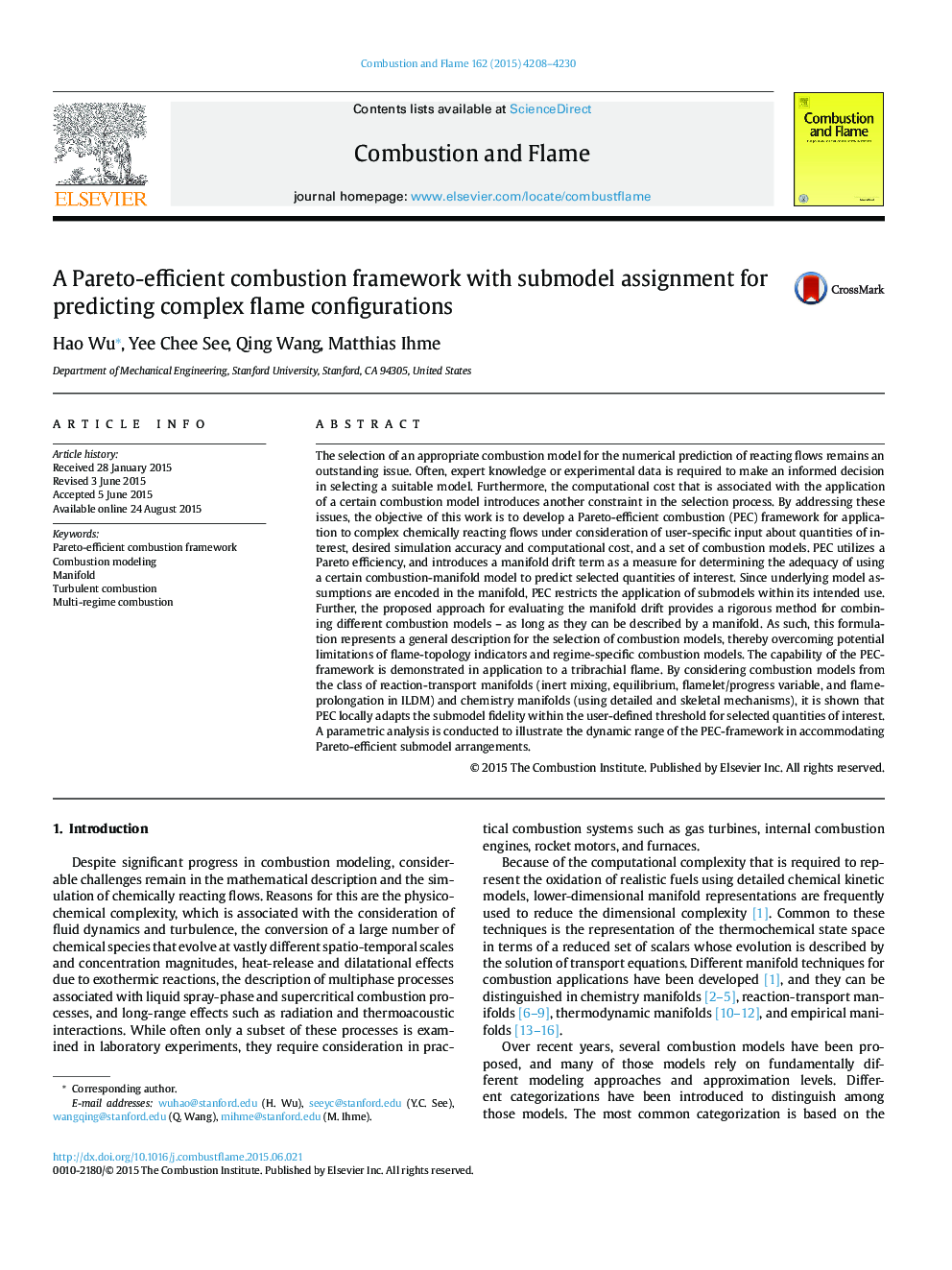| Article ID | Journal | Published Year | Pages | File Type |
|---|---|---|---|---|
| 10264366 | Combustion and Flame | 2015 | 23 Pages |
Abstract
The selection of an appropriate combustion model for the numerical prediction of reacting flows remains an outstanding issue. Often, expert knowledge or experimental data is required to make an informed decision in selecting a suitable model. Furthermore, the computational cost that is associated with the application of a certain combustion model introduces another constraint in the selection process. By addressing these issues, the objective of this work is to develop a Pareto-efficient combustion (PEC) framework for application to complex chemically reacting flows under consideration of user-specific input about quantities of interest, desired simulation accuracy and computational cost, and a set of combustion models. PEC utilizes a Pareto efficiency, and introduces a manifold drift term as a measure for determining the adequacy of using a certain combustion-manifold model to predict selected quantities of interest. Since underlying model assumptions are encoded in the manifold, PEC restricts the application of submodels within its intended use. Further, the proposed approach for evaluating the manifold drift provides a rigorous method for combining different combustion models - as long as they can be described by a manifold. As such, this formulation represents a general description for the selection of combustion models, thereby overcoming potential limitations of flame-topology indicators and regime-specific combustion models. The capability of the PEC-framework is demonstrated in application to a tribrachial flame. By considering combustion models from the class of reaction-transport manifolds (inert mixing, equilibrium, flamelet/progress variable, and flame-prolongation in ILDM) and chemistry manifolds (using detailed and skeletal mechanisms), it is shown that PEC locally adapts the submodel fidelity within the user-defined threshold for selected quantities of interest. A parametric analysis is conducted to illustrate the dynamic range of the PEC-framework in accommodating Pareto-efficient submodel arrangements.
Related Topics
Physical Sciences and Engineering
Chemical Engineering
Chemical Engineering (General)
Authors
Hao Wu, Yee Chee See, Qing Wang, Matthias Ihme,
